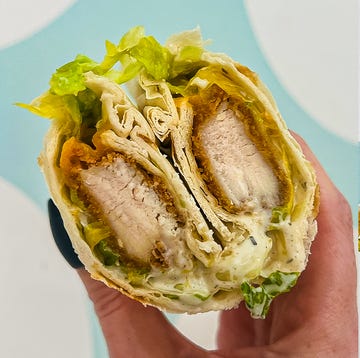UPDATE: Jan. 26, 2018 at 3:19 p.m.
The Centers for Disease Control and Prevention released a statement on Thursday saying the outbreak of E. coli infections that impacted 15 states across the country "appears to be over as of January 25, 2018." The CDC, along with several states, and the Food and Drug Administration, investigated the outbreak, interviewing 15 people who became sick between November 5, 2017 and December 12, 2017.
Even though the information the organizations gathered indicated that the most likely source of the outbreak in the United States was leafy greens, the specific type of leafy greens that served as the source of infection was not identified. Since leafy greens have a short shelf life, and since the last illness started over a month ago, the CDC says the contaminate is most likely no longer available for sale.
ORIGINAL POST: Jan. 4, 2018 at 3:25 p.m.
Fifty-eight people in the United States and Canada have become ill from a strain of E. coli bacteria over the past seven weeks, most likely from eating romaine lettuce, according to experts.
Canadian health authorities identified romaine as the source of the outbreak in Canada, but U.S. government health officials are still investigating. For now, Consumer Reports' food safety experts are advising that everyone stops eating romaine lettuce until the cause of the outbreak is identified.
In the U.S., infections have occurred in 13 states, including California, Connecticut, Illinois, Indiana, Michigan, Nebraska, New Hampshire, New York, Ohio, Pennsylvania, Virginia, Vermont, and Washington. So far five people in the U. S. have been hospitalized and one has reportedly died, according to the Centers for Disease Control and Prevention (CDC) — and an additional death has occurred in Canada.
"Even though we can't say with 100% certainty that romaine lettuce is the cause of the E. coli outbreak in the U.S., a greater degree of caution is appropriate given that lettuce is almost always consumed raw," says James Rogers, Ph.D., Director of Food Safety and Research at Consumer Reports.
Rogers explains that vegetables can be contaminated if animal feces are in the field or in irrigation or washing water. The bacteria can also be transmitted if a person who is carrying the bacteria doesn't wash his or her hands after using the bathroom and then processes or prepares food.
It's also important to note that washing your greens won't necessarily get rid of dangerous E. coli in nooks and crannies of the leaves. Your safest bet for now is cutting this green out of your diet. But once romaine is cleared as safe to eat, it's still important to thoroughly wash your leaves before eating them.
To cut down on the time this takes, Betty Gold, Senior Product Analyst in the Kitchen Appliances and Technology Lab of the Good Housekeeping Institute, recommends investing in an OXO Good Grips Salad Spinner ($30, amazon.com). Gold also recommends cutting off the root of the lettuce head before washing it and putting it in your spinner. "A lot of the dirt and icky stuff tends to hide in there and this will make it easier to clean the bottom of the leaves," Gold says.
Until romaine is given the all clear, Jaclyn London, MS, RD, CDN, and Nutrition Director of the Good Housekeeping Institute, recommends trying arugula, spring mix, butter lettuce, cabbage, or spinach instead. And just to be safe, you should go ahead and give these varieties a good washing before you consume them too.
h/t Consumer Reports
Follow Delish on Instagram.
Download the Delish app.













